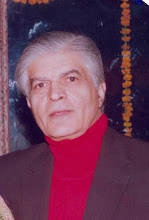Digestive System Part II
The grinder, liquidizer, chemical splitter and soak-up chamber

Teeth form and function
Molars
-Molars are the big strong teeth at the back of your mouth on either side. They have flat tops with ridges and are good for grinding and softening food. You have two or three pairs of molars on each side.
-The third pair of molars, called wisdom teeth, is the last to grow, and in some people, they never grow at all.
Premolars
-As an adult, you should have two pairs of premolars on each side, they have two edges but like molars they are good for grinding.
Canines
-You have just one pair of canines on each side. They are the big, pointed teeth just behind your front teeth - ideal for tearing food.
Incisors
-Incisors are the flat front teeth, with sharp edges for cutting food. There are two pairs on each side of the mouth.
ESOPHAGUS The food canal
This is a hollow muscular tube 10 inches (25 cm) in length with a diameter of one inch. In the neck this food pipe lies behind the wind pipe and in the chest it lies behind the heart. The wall of the esophagus is made of two layers of muscle the inner circular and outer placed lengthwise.
The food ball is pushed down towards the stomach by the contraction of muscles in the wall of the esophagus. The food will reach the stomach in about ten seconds. Food will travel down this food pipe when lying down or even if you are standing on your head.
STOMACH The churner liquidizer
The stomach is a large curved bag it is partly high up in the abdomen behind the lower ribs and the liver, when empty it is small and can hold only 500 cc.
The stomach is an expandable sac that can hold up to 1.2 liter (1200cc) of food this storage capacity allows us to stay without food for 3-4 hours.
The wall of the stomach is muscular and has three layers of strong muscle that contract and relax mixing and churning the food with the digestive juices secreted by the lining of the stomach. The juices are rich in hydrochloric acid and enzymes.
About 2500 cc of stomach juice is secreted in a day. - The acid kills the bacteria and helps the enzyme pepsin.
Stomach mucosa is protected from the acid by layer of mucus. The food as a result of this mixing process looks like a frothy paste. This process of mixing can last up to three hours.
The food paste is kept in the stomach by a band of muscle in the wall at the end stomach called the pyloric sphincter when it relaxes the paste now enters the duodenum in short spurts.
The stomach also secretes an intrinsic factor a peptide. This combines with Vitamin B12 and helps in the absorption of this Vitamin.
The food paste stays in the stomach for a longer period if the food contains lots of fats.
DUODENUM Onwards to the chemical splitter
The duodenum is a tube in the form of a C and is 10 inch in length. It receives the paste like contents of the stomach.
In the duodenum, the food mixes with the juices from the liver and pancreas.
The pancreas is like a large salivary gland and secretes about 1500cc/day of juice to breakdown carbohydrates, fats and proteins.
The juices in the duodenum are alkaline to digest proteins and neutralize the acid in the gastric contents and protect the duodenal mucosa from acid injury. They also create alkaline condition to help the action of the enzymes.
Any question should be address to: consensusdc@yahoo.co.in you will receive further information regarding your question.
All posts are stored in the archives for access and review
Visit www.drmmkapur.blogspot.com for updates and additions.





No comments:
Post a Comment